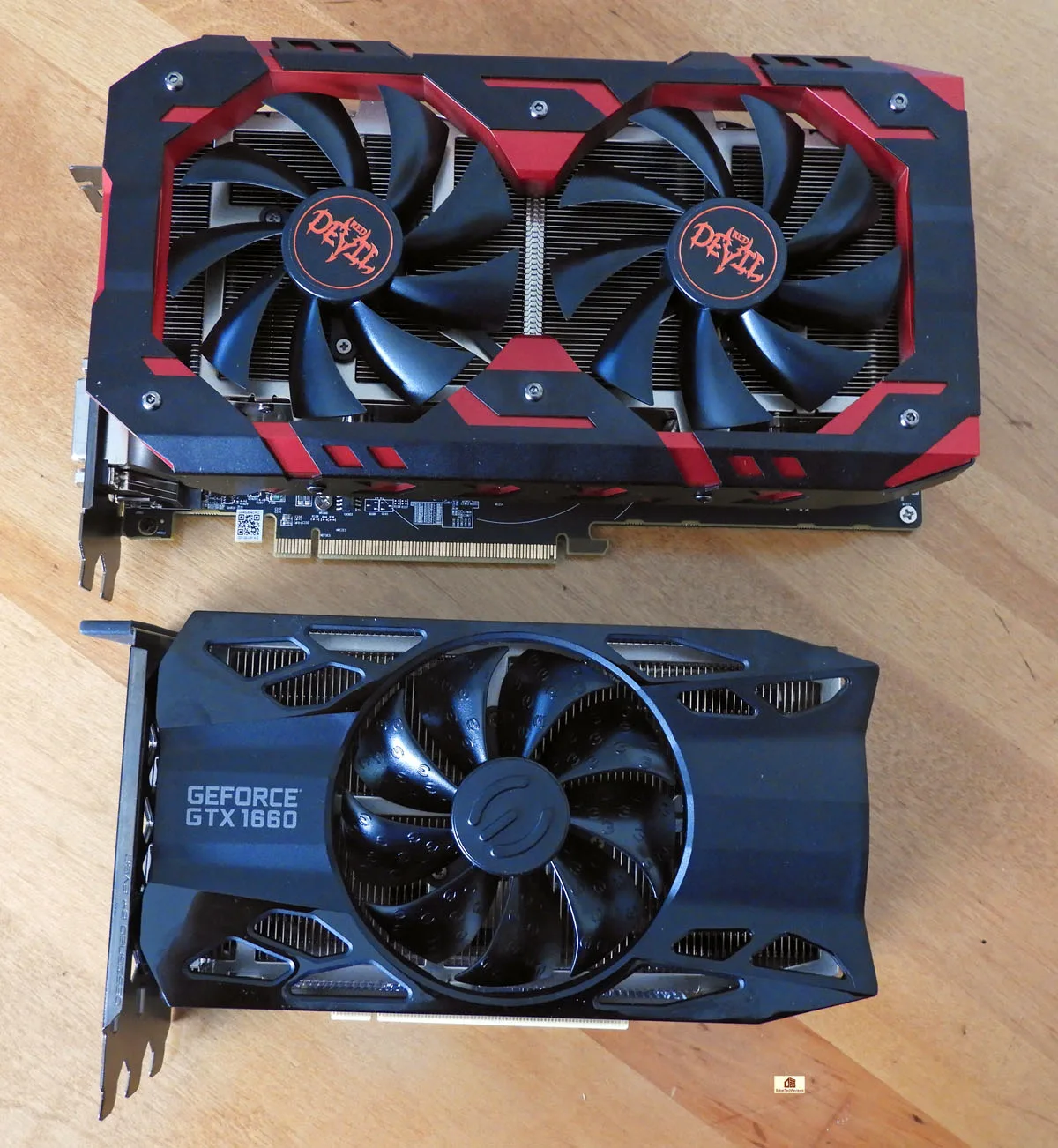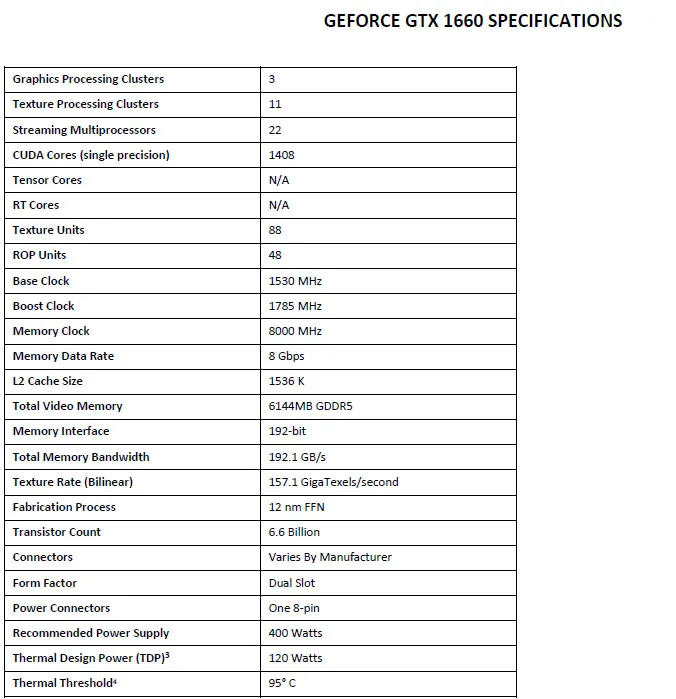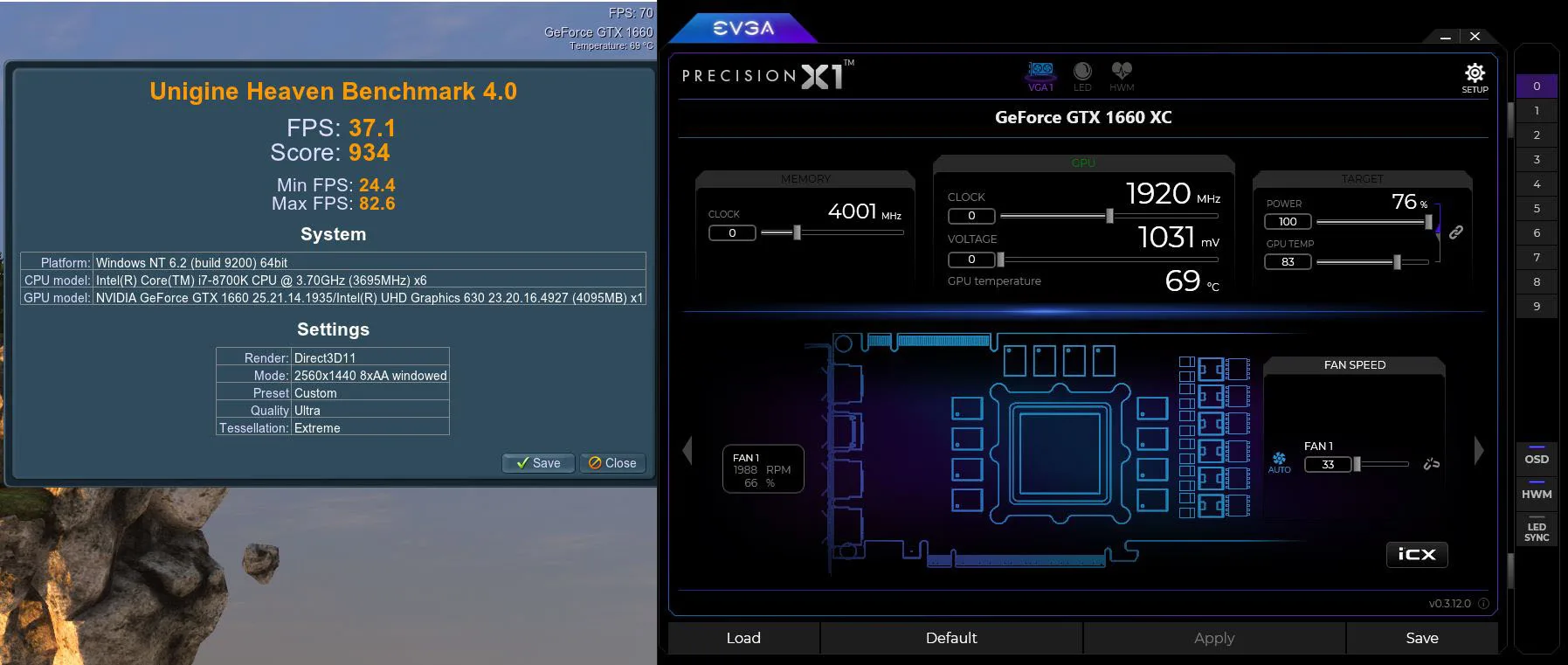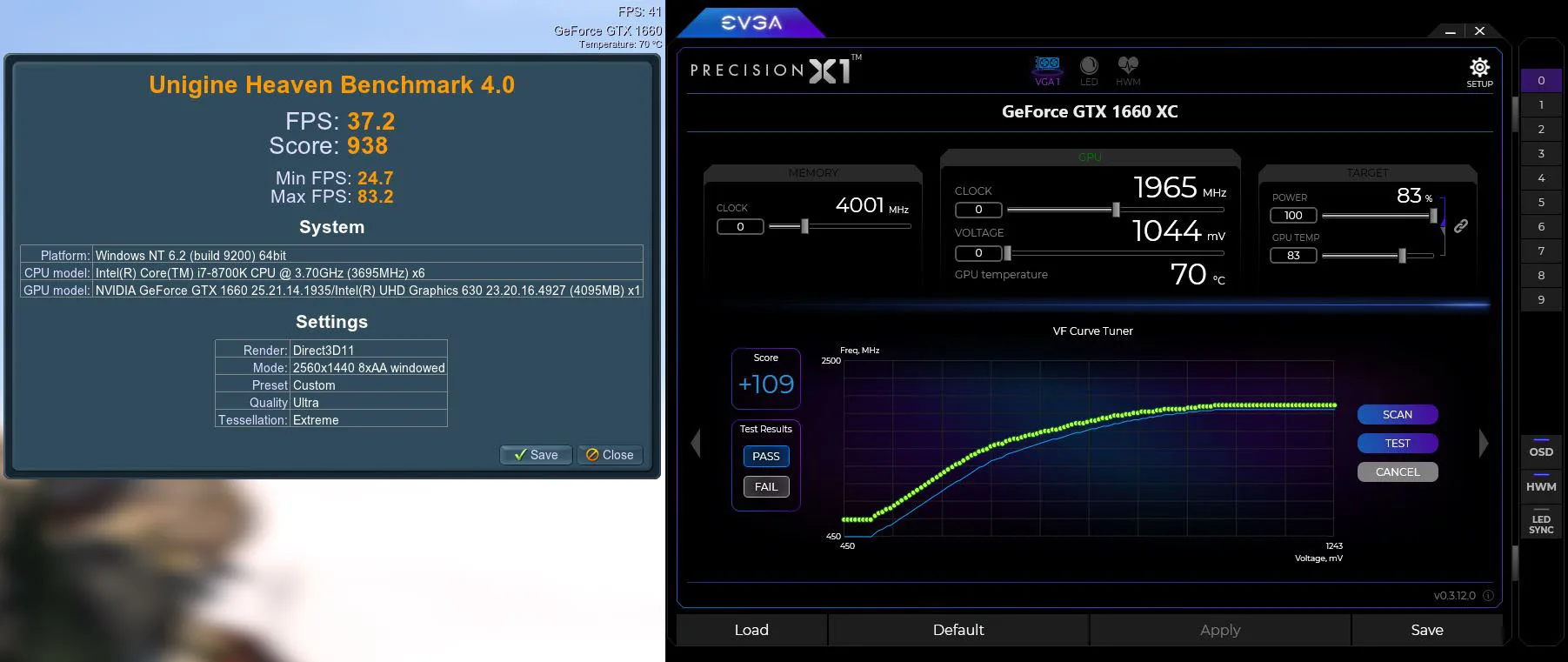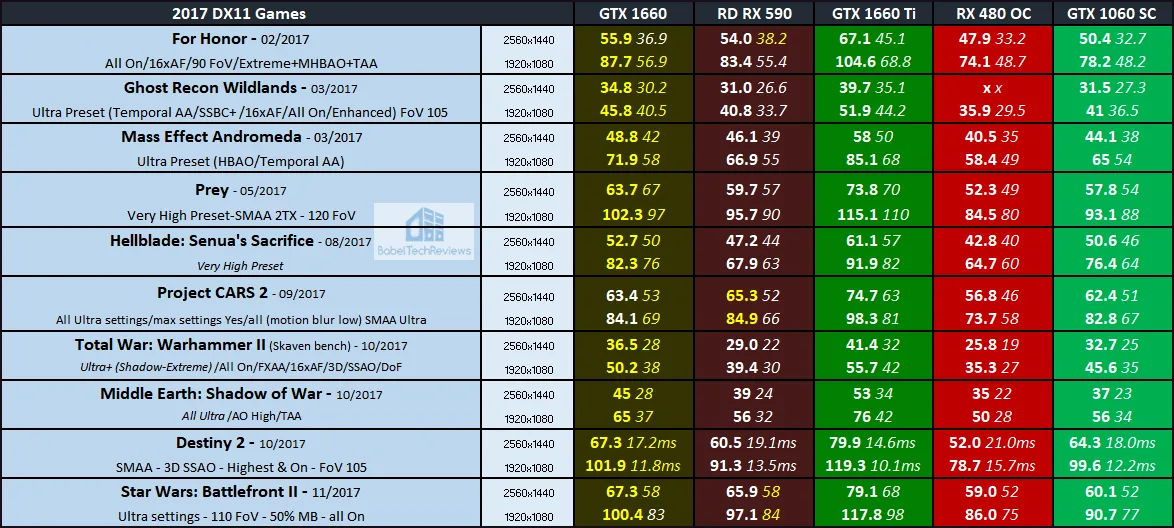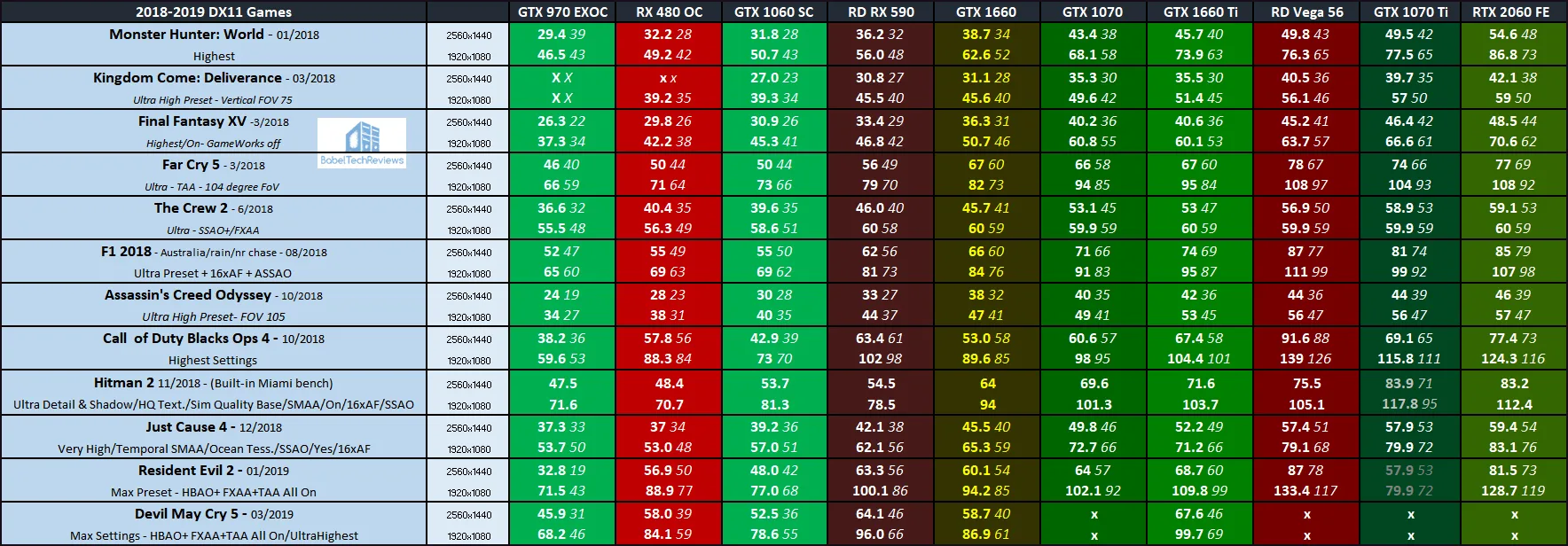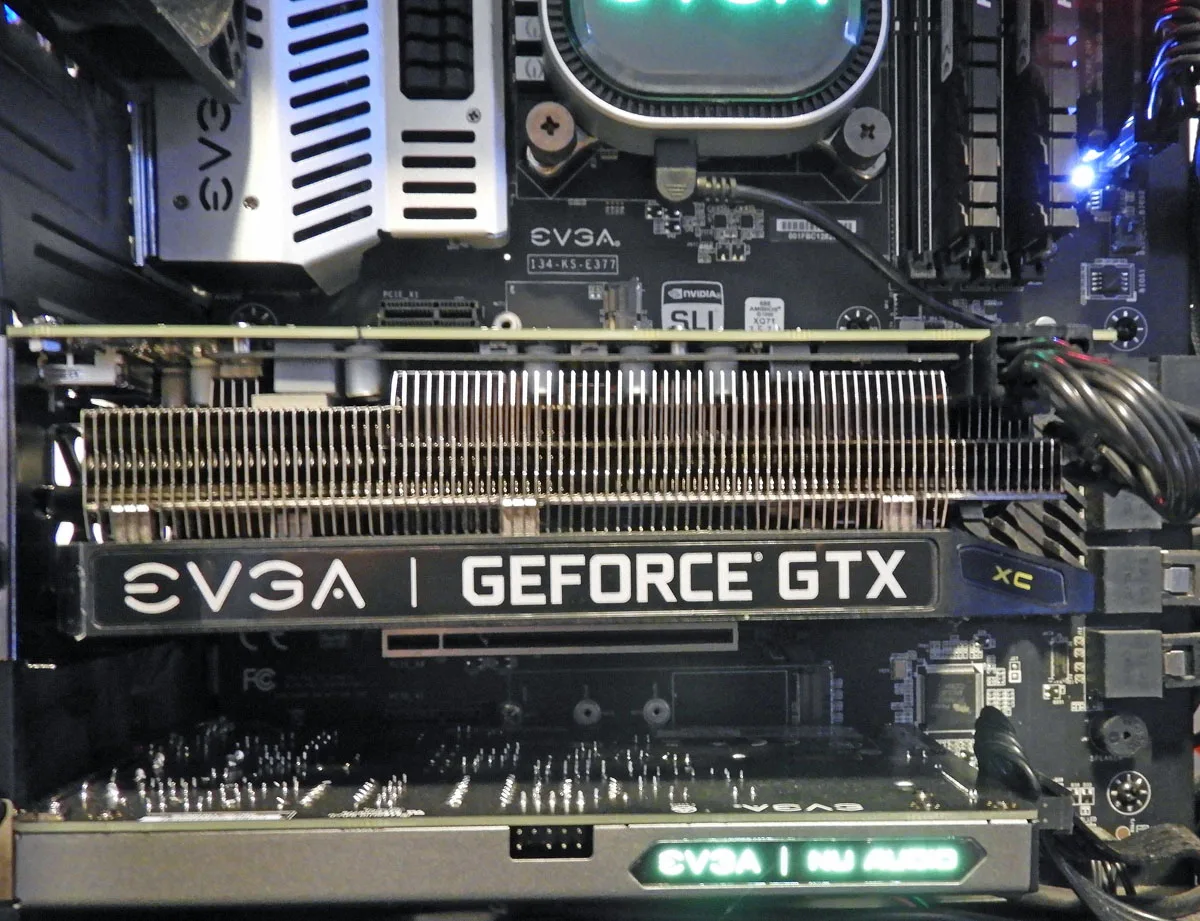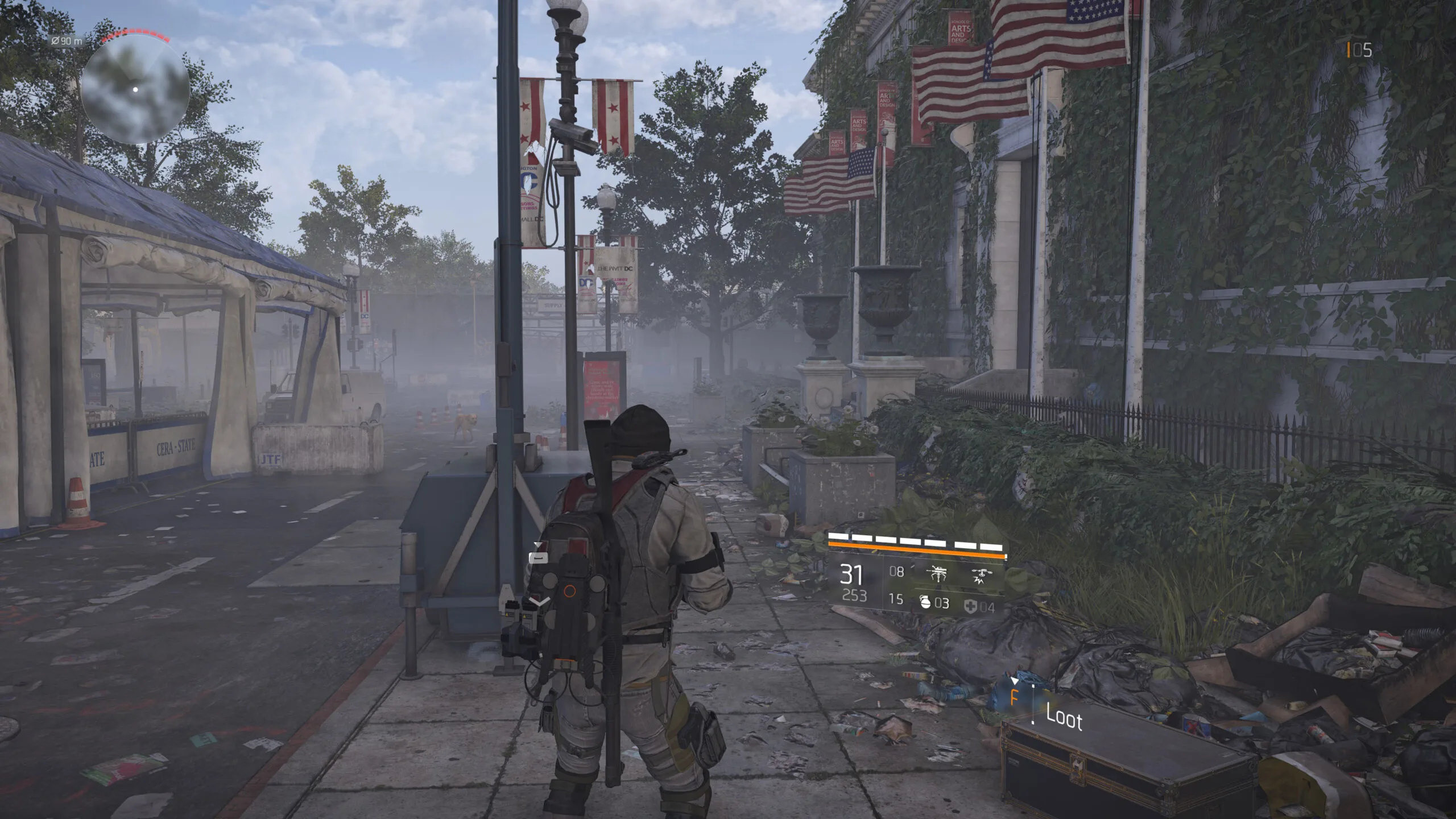The EVGA GTX 1660 XC Gaming arrives to take on the Red Devil RX 590 in this mega 41-game review
The GTX 1660 is the sixth GeForce GPU based on NVIDIA’s Turing architecture. Just as with the GTX 1660 Ti, there is no Founders Edition (FE) so it is represented in this review by the factory overclocked EVGA GTX 1660 XC. The Turing 1660s are successors to the Pascal GTX 1060 and they are not equipped with RT nor Tensor cores which allows the GTX 1660 to launch at $229. It is aimed directly at the RX 590. Since the RTX 1660 Ti’s launch, RX 590s can now be found below $230 with a 3-game bundle.
The GTX 1660 is NVIDIA’s very latest mainstream non-RTX Turing card and it will be available globally today starting at its $229 pricing and up for factory-overclocked cards. The mildly overclocked EVGA GTX 1660 XC is priced at $229 with a $10 mail-in rebate plus a Grip game and EVGA skin bundle.
Like the GTX 1060, the GTX 1660 and 1660 Ti each have 6GB of vRAM. In the EVGA line-up, they look almost identical.
We will highlight the GTX 1660’s differences between the GTX 1060, the RTX 2060, the GTX 1660 Ti, and afterward we will focus on its performance. We will benchmark it versus the $259 Red Devil RX 590 with an expanded 41-game benching suite which now includes Devil May Cry 5 and Metro Exodus to see how capable it is at 1920×1080 and at 2560×1440. We also want to see how the GTX 1660 performs compared with a Galaxy GTX 970 EXOC.
The GTX 1660 and the GTX 1660 Ti are both based on their own Turing TU106 GPU without tensor nor RT cores so they are less complex and less expensive than the RTX 2060. The GeForce GTX 1660s feature the Turing shader core which allows them to exceed Pascal performance in newer games with more complex shaders. TU116 includes support for Concurrent Floating Point and Integer Operations, a Unified Cache Architecture with larger L1 cache, and Adaptive Shading. NVIDIA claims that the GTX 1660 is 68% faster overall than the GTX 970 so we will check it out.
The TDP of GTX 1660 and Ti are each only 120 watts which makes them an easy upgrade from a GTX 970 or GTX 960 as long as the same PSU has an 8-pin power connector. The GTX 1660 Ti features 1536 CUDA Cores and a minimum GPU Boost clock of 1770 MHz as shown by NVIDIA’s chart below.
The GTX 1660 has 1,408 CUDA cores, down from the GTX 1660 Ti’s 1536. While the GTX 1660 Ti uses 6GB of GDDR6, the GTX 1660 uses slower 6GB of GDDR5 memory with a 192-bit memory bus, for a combined memory bandwidth of 192GB/sec which is down considerably from the Ti’s 288.1GB/s. Base and boost clocks are 1530MHz and 1785MHz, respectively which are just a notch up above the Ti’s clocks. Here are the GTX 1660 specifications from NVIDIA’s charts.
The EVGA GTX 1660 XC Gaming edition is factory overclocked with a 45MHz offset over the stock core and its specifications are as below. EVGA offers some of the best warranty and RMA support anywhere. A three year warranty is offered with a further extension possible upon registration.
BTR received a GTX 1660 review sample on an extended loan from EVGA on Monday, and we have put it through its paces. We test all ten of our cards with recent drivers on a clean installation of Windows 10 64-bit Home edition, using a Core i7-8700K with all six cores overclocked to 4.7 GHz by the BIOS, and 16GB of Kingston’s 3333MHz DDR4.
First, let’s unbox the EVGA GTX 1660 XC Gaming.
UNBOXING
The EVGA GTX 1660 XC Gaming
The EVGA GTX 1660 XC Gaming comes in an average sized box that advertises its features.
The features are detailed on the back of the box in multiple languages.
Here are the minimum system requirements.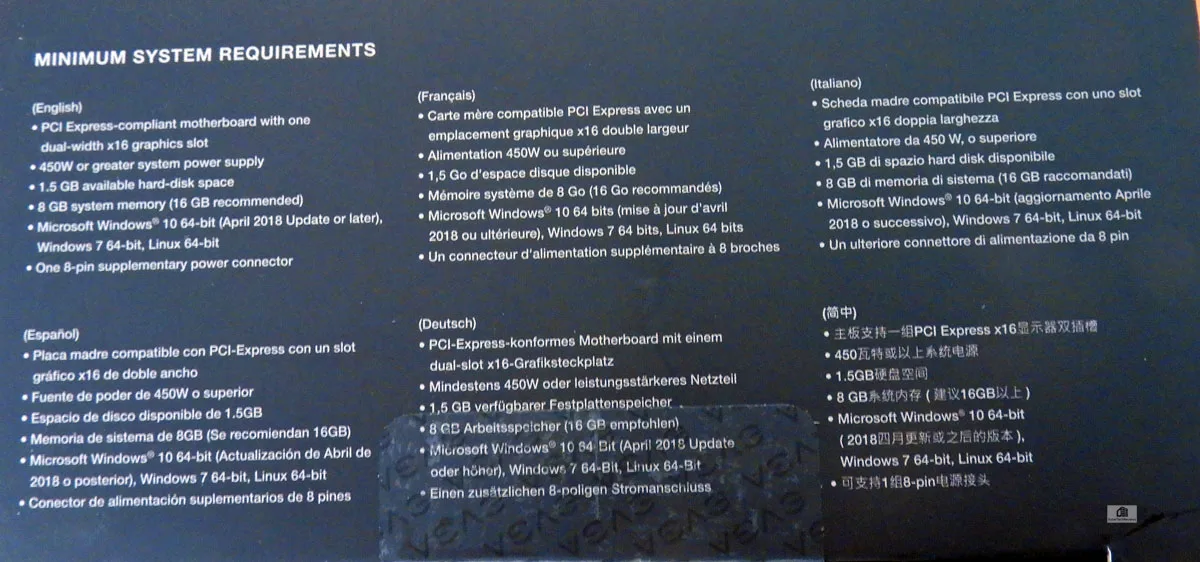
The EVGA GTX 1660 is a single-fan compact card but it is relatively thick.
Turning it around, we see the heatsink extends to the other edge.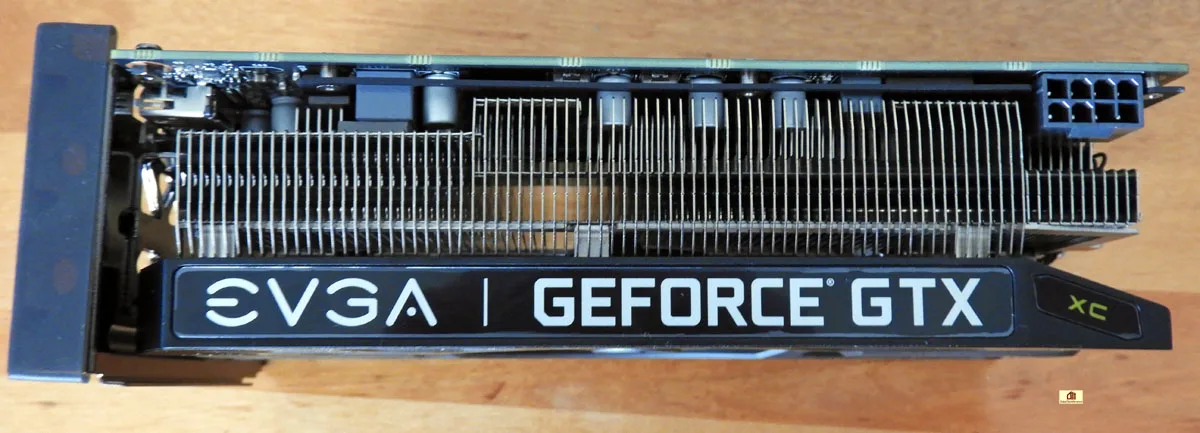 Here is the end.
Here is the end.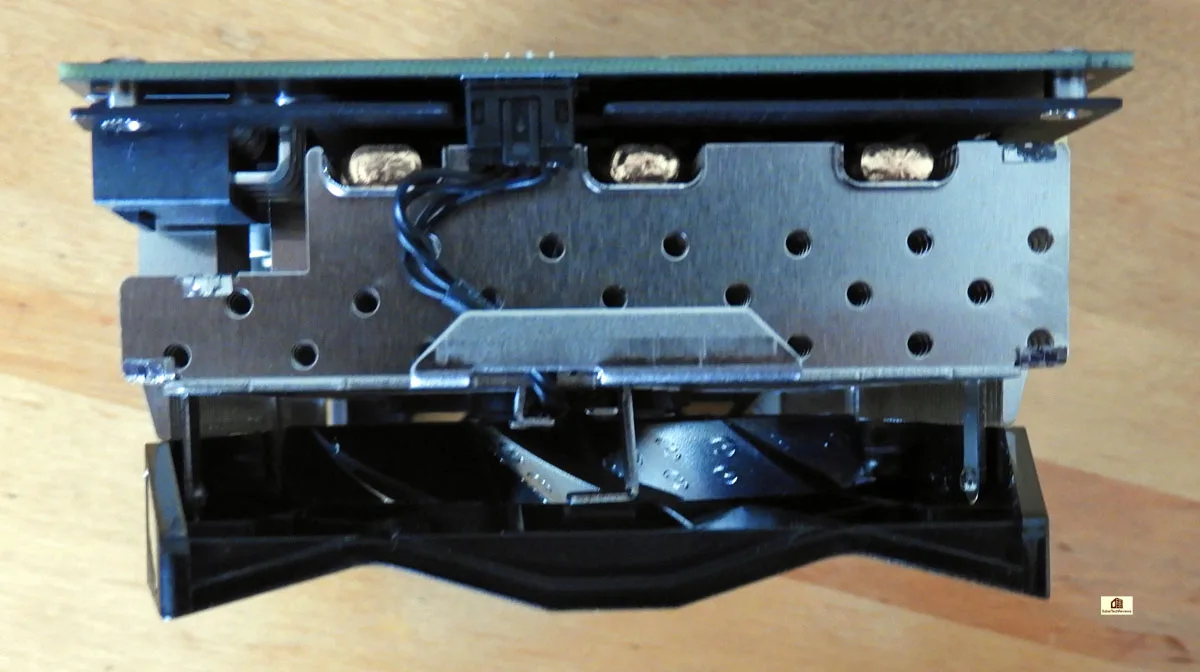
The connectors consist of one DisplayPort, a HDMI connector, and a DVI connector. The new NVIDIA Type-C/VirtualLink connector is an option that EVGA decided to do without although some partner versions may offer it.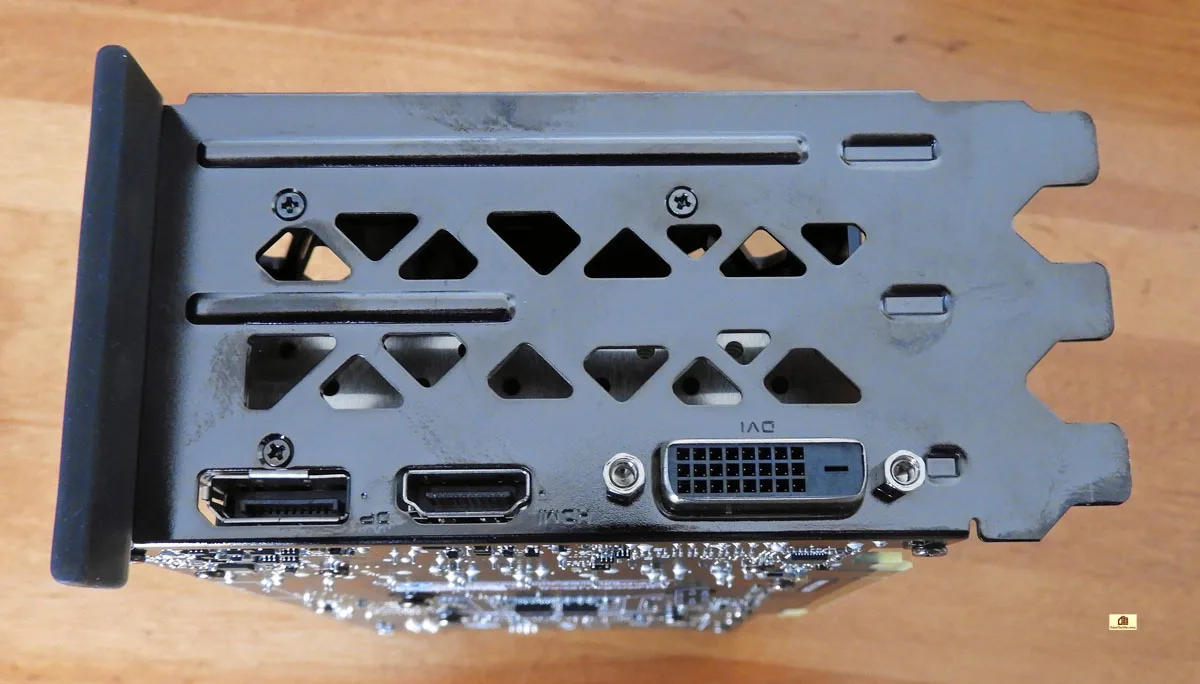
The PCB is raw and there is no backplate as befits an entry-level overclocked card.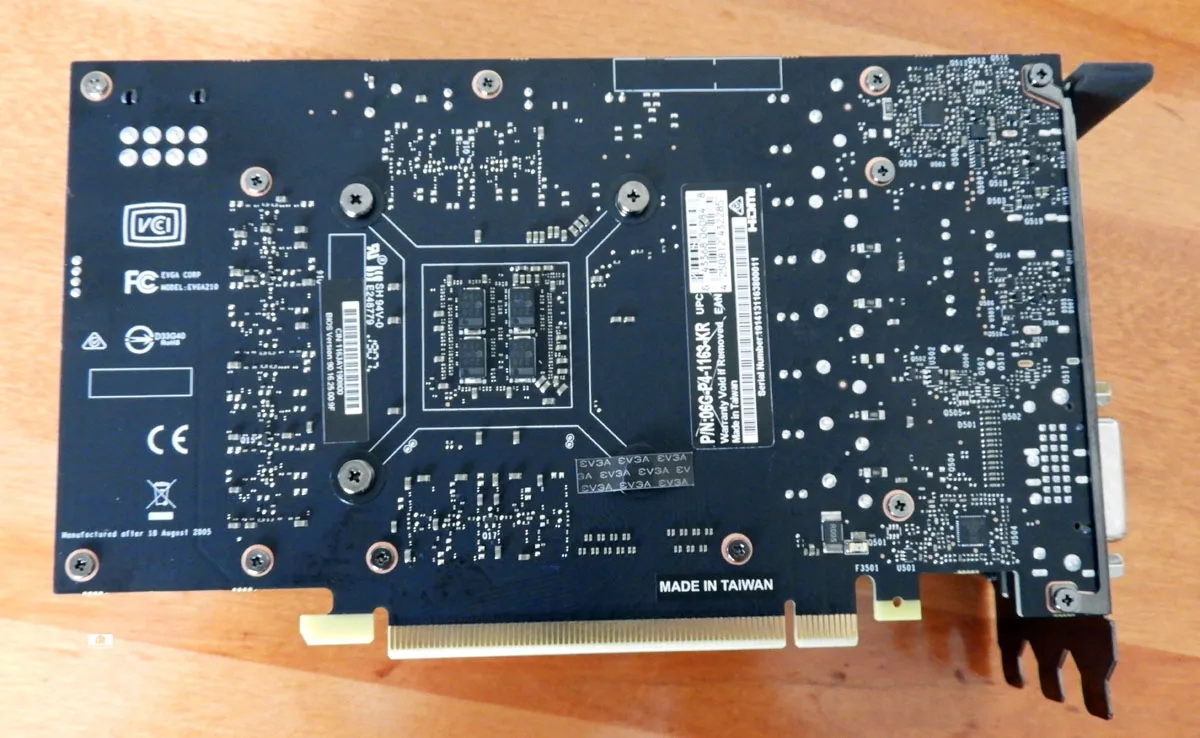
Before we explore overclocking and then performance testing, let’s take a closer look at our test configuration.
Test Configuration – Hardware
- Intel Core i7-8700K (HyperThreading and Turbo boost is on to 4.7GHz for all cores; Coffee Lake DX11 CPU graphics).
- EVGA Z370 FTW motherboard (Intel Z370 chipset, latest BIOS, PCIe 3.0/3.1 specification, CrossFire/SLI 8x+8x), supplied by EVGA
- HyperX 16GB DDR4 (2x8GB, dual channel at 3333 MHz), supplied by HyperX
- EVGA GTX 1660 XC Gaming 6GB, stock GTX 1660 Ti clocks, on loan from EVGA
- EVGA GTX 1660 Ti XC Black 6GB, at factory clocks, on loan from EVGA
- RTX 2060 6GB Founders Edition, stock RTX 2060 clocks, on loan from NVIDIA
- RTX 2070 Founders Edition 8GB, stock RTX 2070 FE clocks, on loan from NVIDIA
- GTX 1070 Ti 8GB Founders Edition, stock FE clocks, on loan from NVIDIA
- GTX 1070 8GB Founders Edition, stock FE clocks, on loan from NVIDIA
- EVGA GTX 1060 SC 6GB, factory SC clocks, on loan from EVGA
- Red Devil RX Vega 56 8GB, at factory overclocked settings, on loan from PowerColor
- Red Devil RX 590 8GB, at factory overclocked settings, on loan from PowerColor
- Gigabyte RX 480 G1 8GB at factory overclocked settings.
- 2 x 480GB Team Group SSDs – one for AMD, and one for NVIDIA
- 1.92TB San Disk enterprise class SSD
- 2TB Micron 1100 enterprise class SSD
- Seasonic 850W Gold Focus power supply unit
- EVGA CLC 280mm CPU water cooler, supplied by EVGA
- EVGA Nu Audio PCIe soundcard, supplied by EVGA
- Edifier R1320T Active speakers
- EVGA DG-77, mid-tower case supplied by EVGA
- LG 43″ HDR 4K TV
- Monoprice Crystal Pro 4K
Test Configuration – Software
- Nvidia’s GeForce 419.35 drivers used for the GTX 1660 and for the GTX 970. The 419.17 drivers are used for the GTX 1660 Ti, and for the GTX 1070. 418.81 is used for the RTX 2060 FE, 417.71 WHQL drivers are used for the GTX 2070 FE, 418.91 for the GTX 1060, and 417.54 is used for the GTX 1070 Ti. See NVIDIA Control Panel image below.
- AMD Adrenalin Software 19.3.1 used for the RX 480 and the RX 590. The 19.2.3 drivers used for the RX Vega 56. See the AMD Control Panel image below.
- VSync is forced off.
- AA enabled as noted in games; all in-game settings are specified with 16xAF always applied
- Gaming results show average frame rates in bold including minimum frame rates shown on the chart next to the averages in a smaller italics font.
- Highest quality sound (stereo) used in all games.
- Windows 10 64-bit Home edition. All DX11 titles were run under DX11 render paths. DX12 titles are generally run under the DX12 render path unless performance is lower than with DX11. Three games use the Vulkan API.
- Latest DirectX
- All 39 games are patched to their latest versions at time of publication.
- WattMan used to set Radeon cooling and power options.
- Precision X1 used for all GeForce settings and for overclocking the GTX 1660 Ti.
- OCAT, latest version
- Fraps, latest version
- Unigine Heaven 4.0 benchmark
41 PC Game benchmark suite & 4 synthetic tests
Synthetic
- Firestrike – Basic & Extreme
- Time Spy DX12
- Superposition
DX11 Games
- Grand Theft Auto V
- The Witcher 3
- Fallout 4
- Rainbow Six Siege
- Battlefield 1
- For Honor
- Ghost Recon Wildlands
- Mass Effect: Andromeda
- Prey
- Hellblade: Senua’s Sacrifice
- Project CARS 2
- Total Wars: Warhammer II
- Middle Earth: Shadow of War
- Destiny 2
- Star Wars: Battlefront II
- Monster Hunter: World
- Kingdom Come: Deliverance
- Final Fantasy XV
- Far Cry 5
- The Crew 2
- Assassin’s Creed: Odyssey
- Call of Duty: Black Ops 4
- Hitman 2
- Just Cause 4
- Resident Evil 2
- Devil May Cry 5
DX12 Games
- Tom Clancy’s The Division
- Ashes of the Singularity: Escalation
- Hitman
- Rise of the Tomb Raider
- Deus Ex Mankind Divided
- Gears of War 4
- Civilization VI
- Sniper Elite 4
- Forza 7
- Shadow of the Tomb Raider
- Battlefield V
- Metro Exodus
Vulkan Games
- DOOM
- Wolfenstein: The New Colossus
- Strange Brigade
AMD Adrenalin Control Center Settings
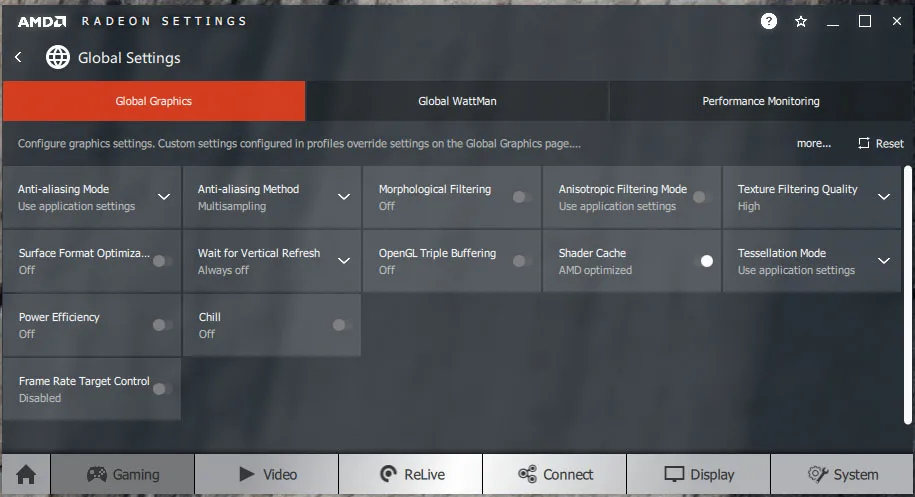 All AMD settings are set so as to be apples-to-apples when compared to NVIDIA’s control panel settings – all optimizations are off, Vsync is forced off, Texture filtering is set to High, and Tessellation uses application settings.
All AMD settings are set so as to be apples-to-apples when compared to NVIDIA’s control panel settings – all optimizations are off, Vsync is forced off, Texture filtering is set to High, and Tessellation uses application settings.
We use Wattman to set the Radeons’ power, temperature and fan settings to their maximums.
NVIDIA Control Panel settings
Here are the NVIDIA Control Panel settings that match AMD’s settings.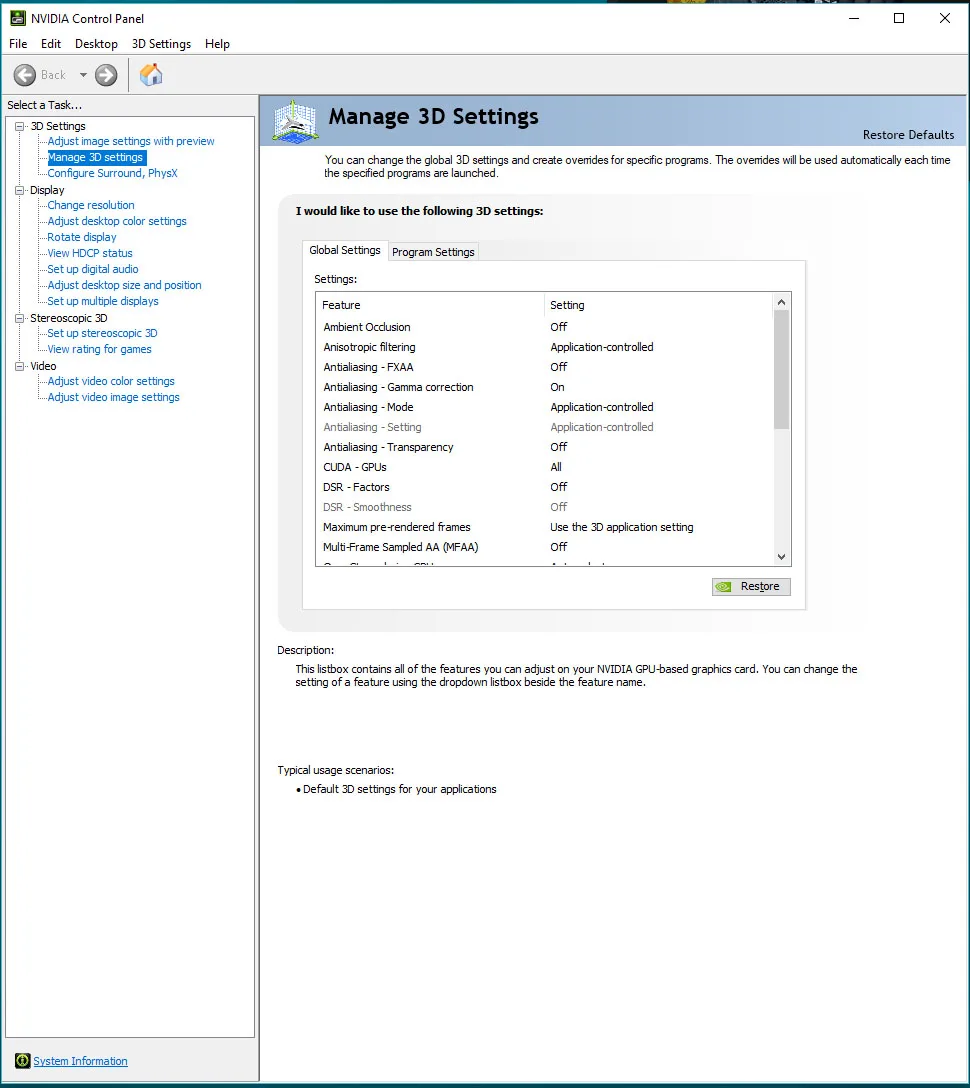
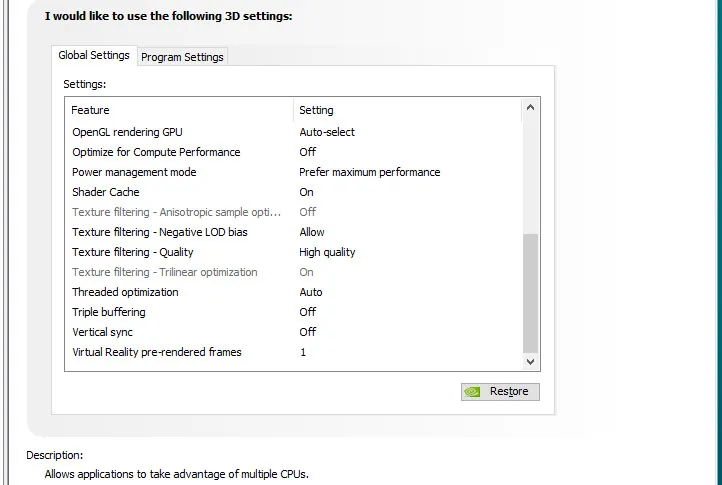 We used the latest beta of Precision X1 to set all GeForces’ highest Power and Temperature targets and for our overclock of the GTX 1660.
We used the latest beta of Precision X1 to set all GeForces’ highest Power and Temperature targets and for our overclock of the GTX 1660.
By setting the Power Limits and Temperature limits to maximum for each card, they do not throttle, but they can each reach and maintain their individual maximum clocks. This is particularly beneficial for high power cards.
Let’s check out overclocking, temperatures and noise next.
Overclocking, temperatures & noise
The XC Edition of the EVGA GTX 1660 is a low-power and quiet card even when overclocked. We could not hear the card over the many fans of our PC even when it ramps up, unlike with the Red Devil RX 590. We will spend much more time manually overclocking in our follow-up overclocking showdown.
Here is Heaven 4.0 running at stock clocks which allowed the Boost to average around 1920MHz. We notice that the card does not benefit – nor does it lose performance – by setting the Temperature target to Maximum as the Power Target is already maxed-out in Precision X1.
We ran Precision X1’s scan several times which indicated that +109MHz to 115MHz could be safely added to the core clocks. Temperatures mostly remained in the 60s C under this overclock.
With the preliminary overclock offset set at 109MHz to the core, the clocks mostly boosted above 1965MHz. We think that we can do better with a manual overclock and that the Precision X1 results are just a starting point. We did not try a GDDR5 memory overclock but will save it for the upcoming overclocking showdown versus the RX 590.
Let’s check the EVGA GTX 1660 XC’s performance compared with nine other cards using 41 games and then head for our conclusion.
Performance Summary Charts
Here are the summary charts of 41 games and 4 synthetic tests. The highest settings are always chosen and the settings are listed on the chart. The benches were run at 1920×1080 and at 2560×1440. Five cards are featured and ten cards are benchmarked for this review’s big picture.
Most results show average framerates and higher is better. Minimum framerates are next to the averages in italics and in a slightly smaller font. A few games benched with OCAT show average framerates but the minimums are expressed by the 99th percentile frametime in ms where lower numbers are better.
The Main Charts
This set of charts show our five main competing cards’ performance. The GTX 1660 in the first column is shown versus the RX 590 in the second with performance wins or ties given in yellow text. The GTX 1660 Ti is in the third column, the RX 480 is in the fourth, and the GTX 1060’s performance is represented in the final and fifth column.
All of the $200-$259 competing tested cards are in a similar class, but the GTX 1660 Ti wins almost all of the games against the RX 590 which trades blows more often against the GTX 1660. The RX 480 and the GTX 1060 offer less performance than the top 3 cards but they are priced lower as can be seen in the Big Picture supporting chart.
We see potential room for improvement with the GTX 1060’s drivers. Both the GTX 1660 and 1660 Ti have a lower average performance improvement versus the GTX 1060 in Gears of War 4 than in other most of the other 40 games we benchmarked. And there are some other irregularities, for example, with lower than expected minimums in Battlefield V.
The Big Picture
The following chart is what BTR calls its “Big Picture”. It uses the same performance numbers but places them into a much larger benching suite with a total of 10 cards on recent drivers. As always, open the individual images into separate tabs or windows for easier viewing. The GTX 1660’s performance results are given in yellow and the cards are generally grouped from slowest (GTX 970) on the left to the fastest on the right (GTX 2060).
The GTX 1660 sits right in the middle of this pack in terms of price and performance. The RTX 2060 FE wins almost every game benchmark over the GTX 1660 Ti and it is also priced in a higher price range and feature class as are the RX Vega 56 and the GTX 1070 Ti.
The GTX 1660 Ti ($279) is significantly faster than the lower-priced RX 590 ($259) and it is even a bit faster overall than the GTX 1070 ($329). The GTX 1660 performance sits right below the GTX 1660 Ti and it trades blows with the RX 590 although it is generally a faster card for 1080P gaming.
The GTX 1060 SC and the RX 480 owners are not the target for upgrading to the GTX 1660, instead the GTX 960 and 970 owners are. We see decent performance improvement from the GTX 1660 versus the GTX 970 and fairly in-line with NVIDIA’s claims. However, we feel that the GTX 1060 would be a more satisfying upgrade coming from a GTX 960, and a GTX 970 gamer should instead probably consider a GTX 1660 Ti especially for above 1080P or for 144Hz gaming.
This has been an unbelievably hectic and short yet enjoyable exploration evaluating the new Turing GTX 1660. It performed very well compared with the more expensive premium Red Devil RX 590, although to be fair, AMD currently offers a 3-game bundle with it.
Although NVIDIA is betting their gaming future on introducing RTX features including DLSS and ray tracing, their strategy is to use these features for the more powerful cards beginning with the RTX 2060. The GTX 1660 is reasonably priced at $229 which is $20 less than the launch price of the GTX 1060 at $249. The GTX 1660 is a mild performance upgrade from a GTX 1060 but would be a great upgrade for a GTX 960 or GTX 970 owner.
Conclusion
We are impressed with this 120W single 8-pin PCIe cabled mainstream Turing GTX 1660 that has solid performance at ultra 1920×1080. The EVGA GTX 1660 XC Gaming Edition is priced at a reasonable $229 with a reliable ten dollar mail-in rebate, and it is faster than the $259 Red Devil RX 590. For a gamer looking for best bang-for-buck 1080P performance, a $229 GTX 1660 may be a good deal compared with the currently-priced $200 RX 580s and the GTX 1060s
We see decent performance improvement of the GTX 1660 over the GTX 970. However, we feel that the GTX 1660 would be a much more noticeable upgrade coming from a GTX 960, and a GTX 970 gamer should probably instead consider a GTX 1660 Ti especially for above 1080P or for 144Hz gaming.
The EVGA GTX 1660 XC is well-built, solid, good-looking, and it appears to overclock decently. In our case, we overclocked our review sample a preliminary 115MHz over stock clocks. Our follow-up GTX 1660 overclocking showdown versus the Red Devil RX 590 will explore manual overclocking before the end of this weekend.
Pros
- The EVGA GTX 1660 XC Gaming is a fast 1080P mainstream card that performs better than a higher-priced premium Red Devil RX 590.
- Overclocking headroom appears to be decent.
- The EVGA GTX 1660 XC Gaming is quiet and efficient using only 120W and a single 8-pin connector. The card stays cool and quiet even when overclocked.
- Although it is factory overclocked, there is no price premium over entry-level GTX 1660s.
- Ten dollar mail-in rebate plus a Grip game and EVGA skin bundle sweeten the deal.
- EVGA offers a 3 year warranty with an extension and backs it with some of the best customer and warranty service available anywhere.
Cons
- None
The Verdict:
If you are buying a fast mainstream 1080P video card  right now, the EVGA GTX 1660 is a great choice at $229 with a game bundle and mail-in-rebate. The GTX 1660 is faster than any factory overclocked GTX 1060, RX 580 or even any premium RX 590, and it has newer features.
right now, the EVGA GTX 1660 is a great choice at $229 with a game bundle and mail-in-rebate. The GTX 1660 is faster than any factory overclocked GTX 1060, RX 580 or even any premium RX 590, and it has newer features.
We would like to award the EVGA 1660 XC the BabelTechReviews Highly Recommended Award for what is essentially the best card in its class.
The EVGA GTX 1660 XC Gaming edition brings a reasonably-priced mainstream addition to the GeForce Turing GTX family. A gamer can be assured of immersive gaming by picking this card for 1080P or perhaps even for entry-level VR. If you currently game on an older generation video card such as a GTX 960 or even a GTX 970, you will do yourself a favor by upgrading to a GTX 1660 or GTX 1660 Ti.
Stay tuned, there is a lot coming from us at BTR. We will shortly pit the EVGA GTX 1660 XC versus the Red Devil RX 590 in an overclocking showdown this weekend. We also expect to post a PC game review of The Division 2 shortly.
Happy Gaming!

